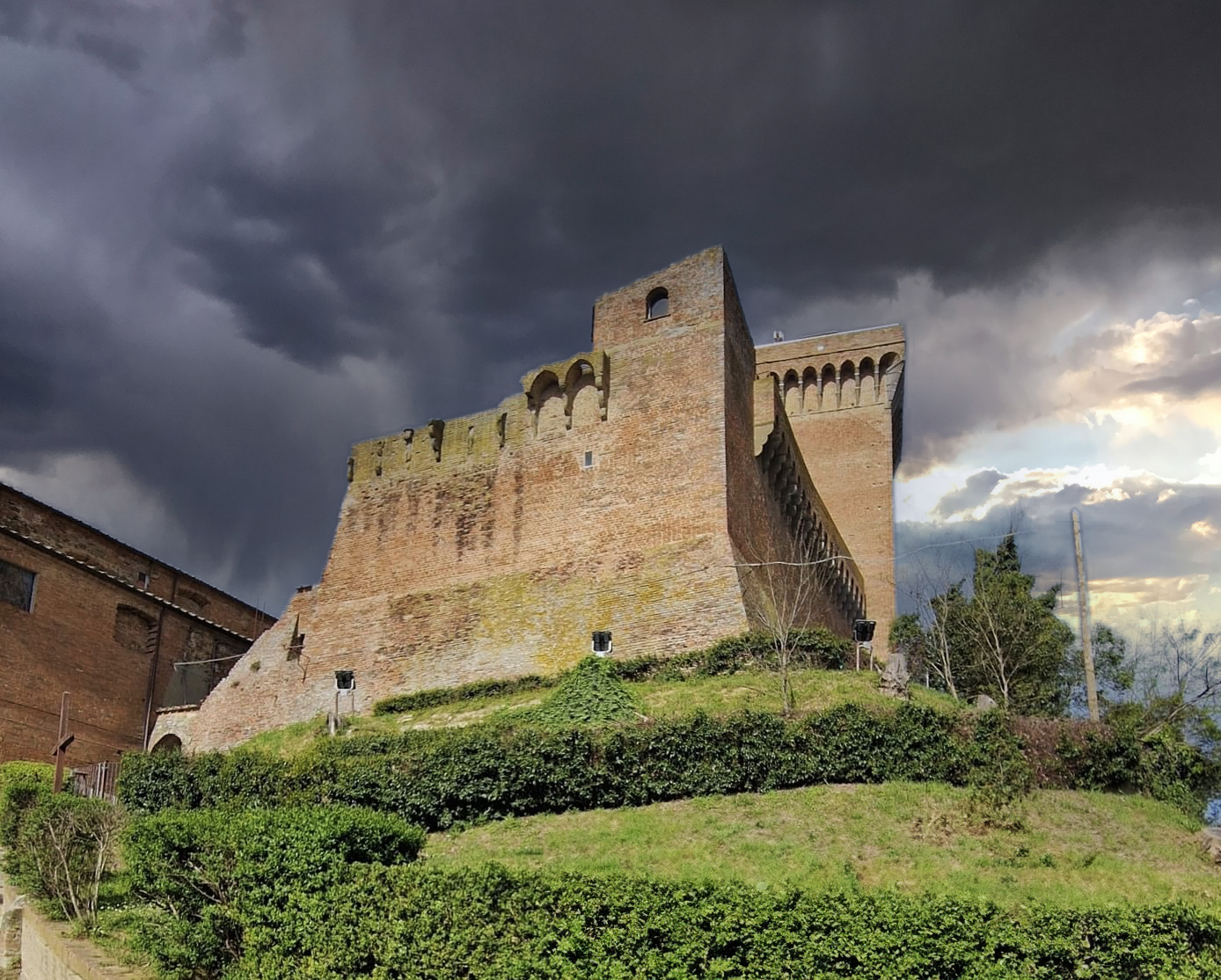


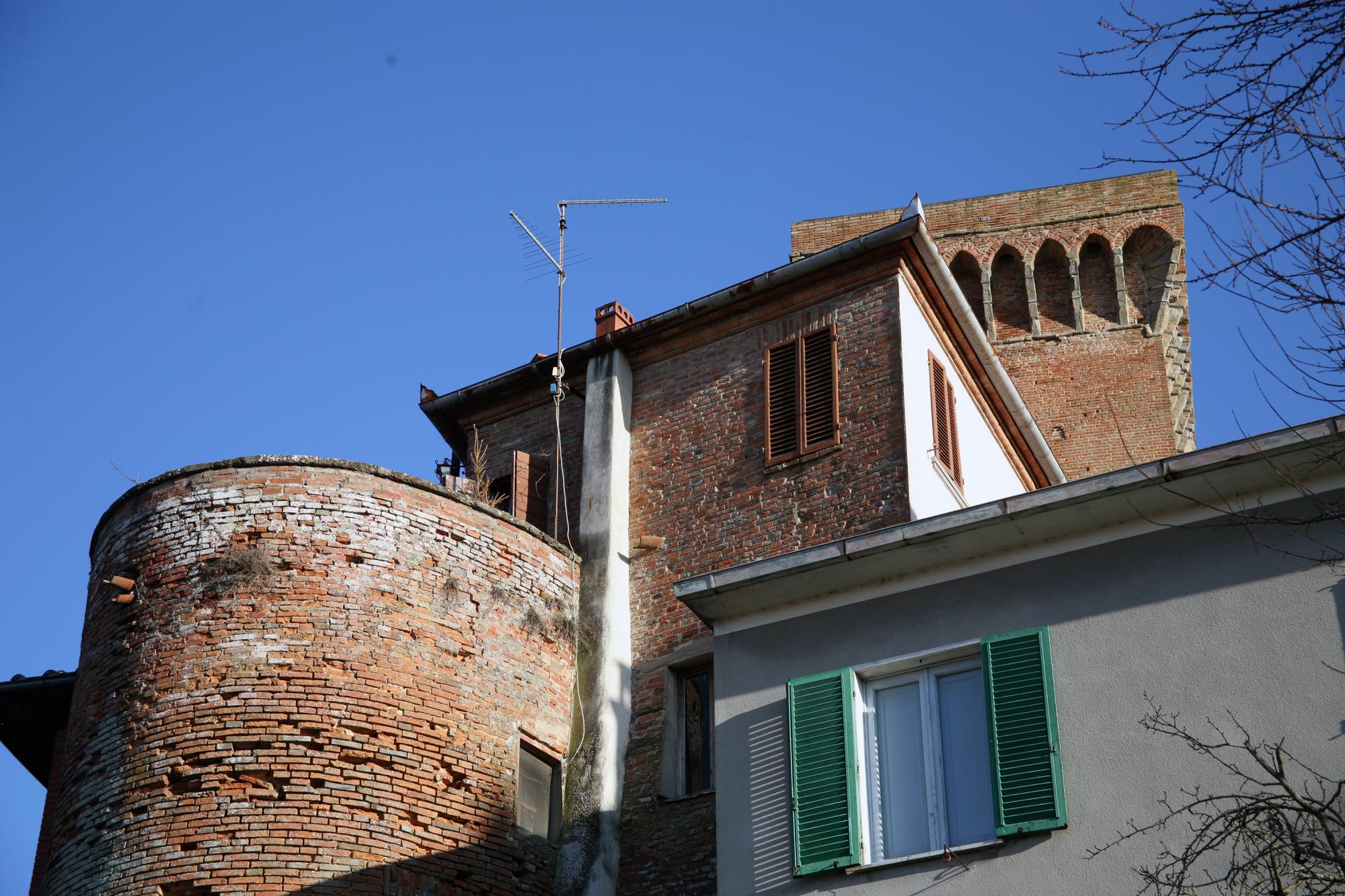


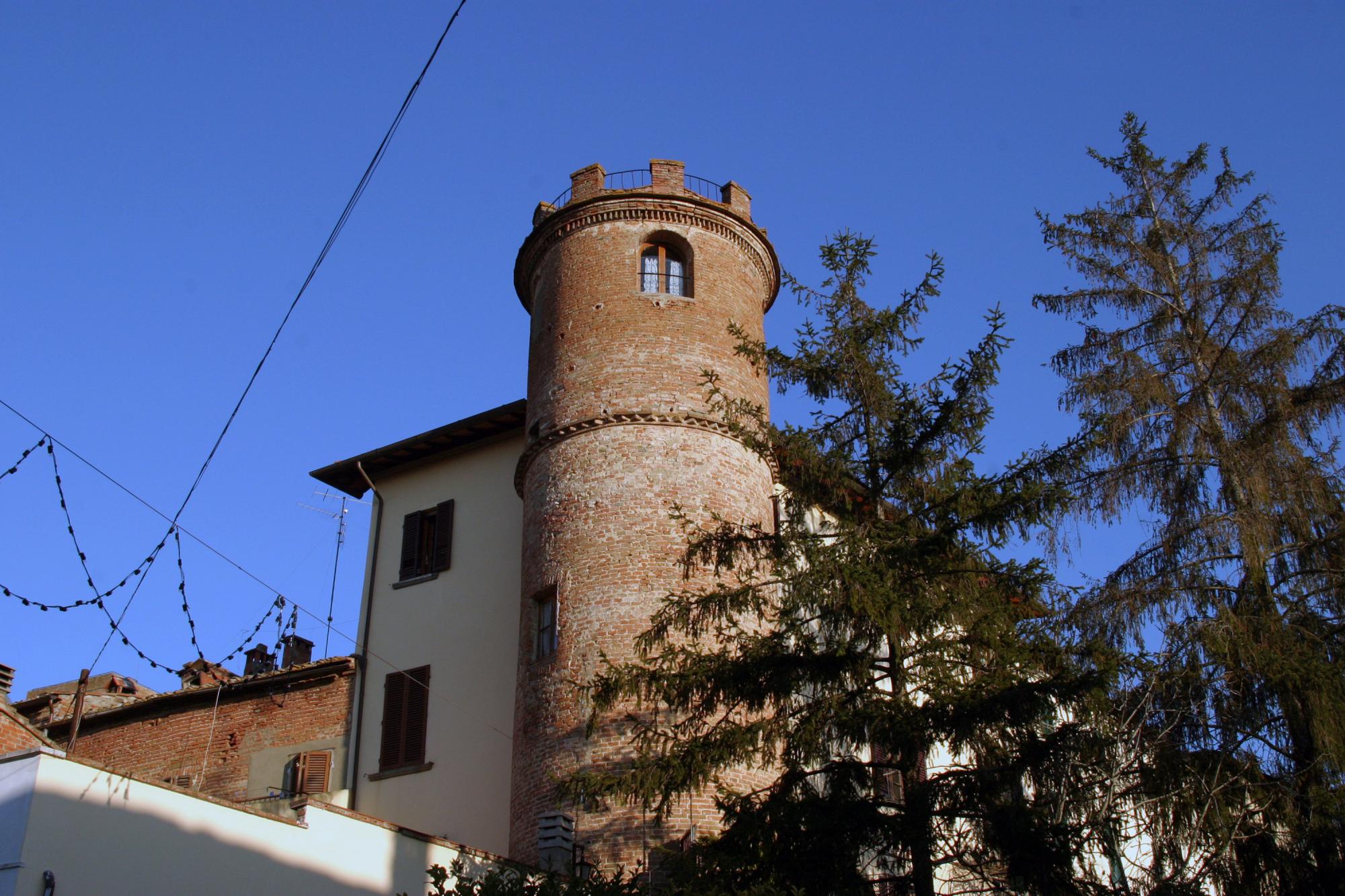

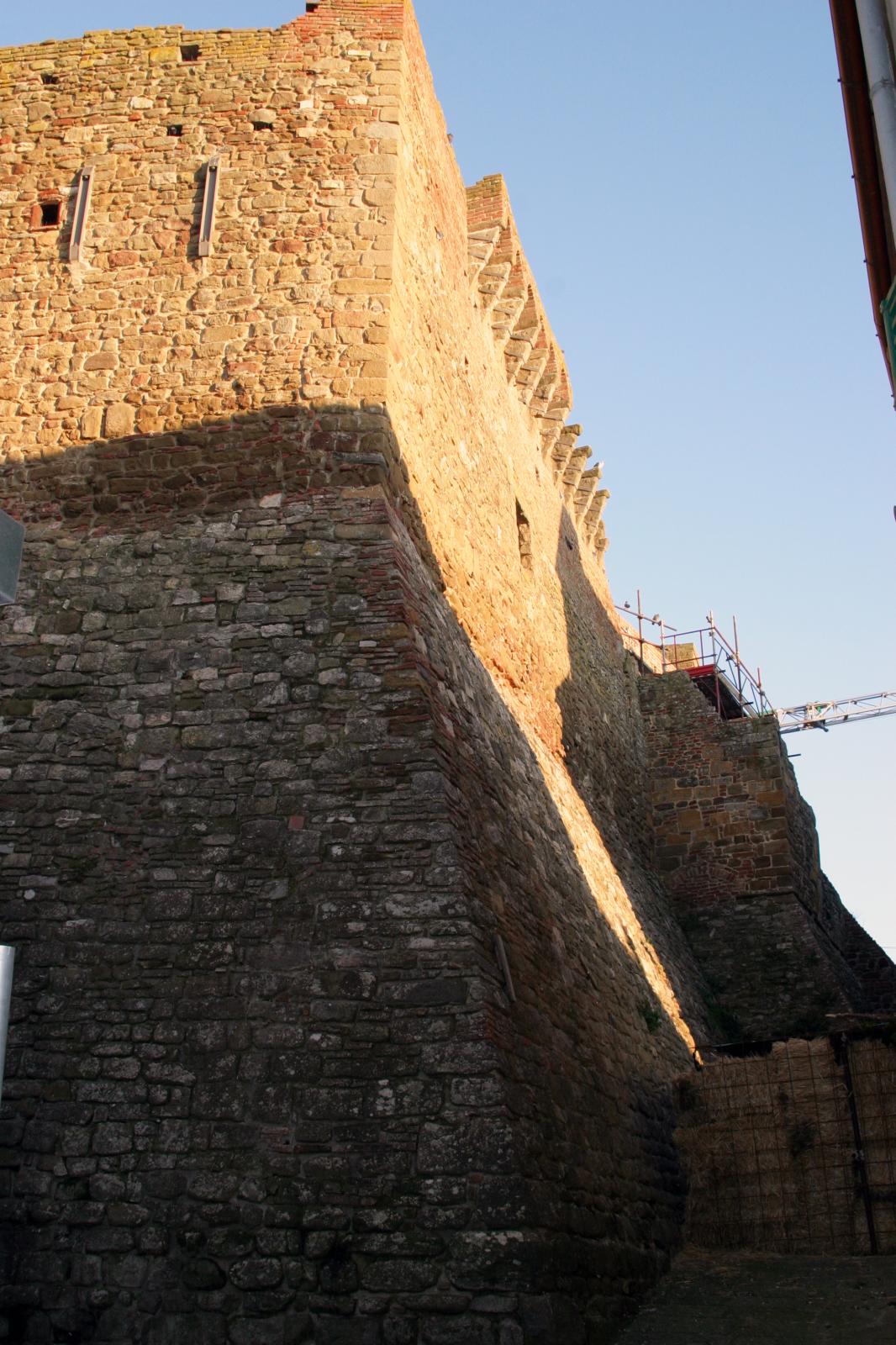
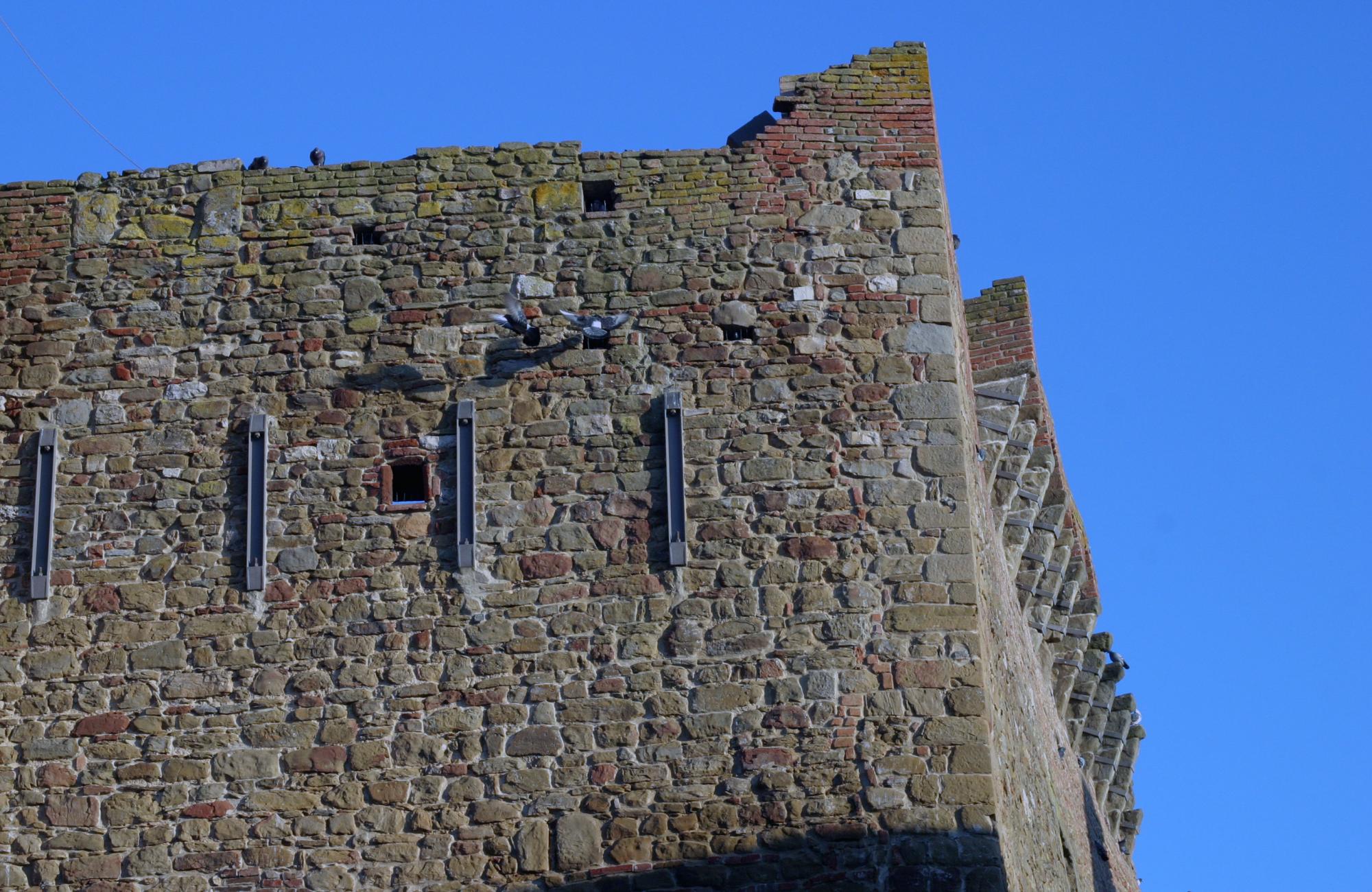










How to reach
The walled town di Marciano della Chiana, towered by the Rocca, ca ne reached following the A1 Motorway until the exit 'Monte San Savino'. Then turn right and follow the indications, Marciano is only 4 kms. away.
History
A settlement of Etruscan origin, founded between the 4th and 2nd centuries B.C. on the western hills of the Chiana Valley, Marciano developed during the Roman age thanks to its graceful position along an important branch of the Cassia Adrianea road that served all of the Chiana Valley. However, only from the 11th century [1084] can we find the name of Marciano written in documents: described as 'curtis' [fortified settlement] property of the monk of Arezzo Cathedral [1183] and then fief, until 1384, of the powerful Tarlati family.
In that year, Marciano, together with Arezzo and its countryside, were acquired by the Florentine Republic. During the 15th century, Marciano became an important stronghold on the borderline between the territories of Florence and Siena, so the fortified enclosure was strengthened and a new, mighty Rocca was built on the north-east corner of the town walls. In the year 1439, the castle was occupied by Bernardino della Carda, captain of fortune, and in 1554, on the nearby Scannagallo hill, a famous battle between the Spanish-Medicean (Florentine) and the French-Sienese armies, known in history as the 'Battaglia di Marciano' (Battle of Marciano), was decisive for the definitive defeat of the Sienese Republic.
The fortified complex Castle/Walled Town, commenced by the Aretine, transformed by the Sienese and carried on by the Florentine in the 15th century, is today still easily identifiable. The walled curtain, endowed with a Main Gate is dominated by the massive structure of the Rocca. A severe geometrical system is a symbol of the exclusive military role of the settlement.
Today, a great part of the town walls are lost or incorporated into follow-up civil works, but some elements can still catch your attention: two rounded towers in bricks positioned in the north-west and south-west corners. At the centre of the front toward Lucignano [West], we can still admire the magnificent Main Gate, decorated by three coats of arms surmounted by a fourth and greater one of the Medici family. A slight machicolation is at the base of the clock tower. On the opposite front is opened the 'Porticciolo', a postern, a secondary way out. The castle was also served by some underground galleries.
The Rocca is still in a good state today. A big squared building with high—more than 4 meters - scarped walls with machicolations surrounds the keep tower, built in the middle of the northern city walls curtain; on the opposite side (inside the town), a tight barbican, protected by a second smaller tower, overwhelms the 'Porticciolo' postern. The only access to the Rocca is through a second postern just below the keep. A second gate, now walled up, was opened in the external curtain. The fortification is built of limestone and bricks. The main tower or keep was the headquarters of the garrison; it was divided into floors by wooden floors connected only by inside retractile staircases for the extreme defence.